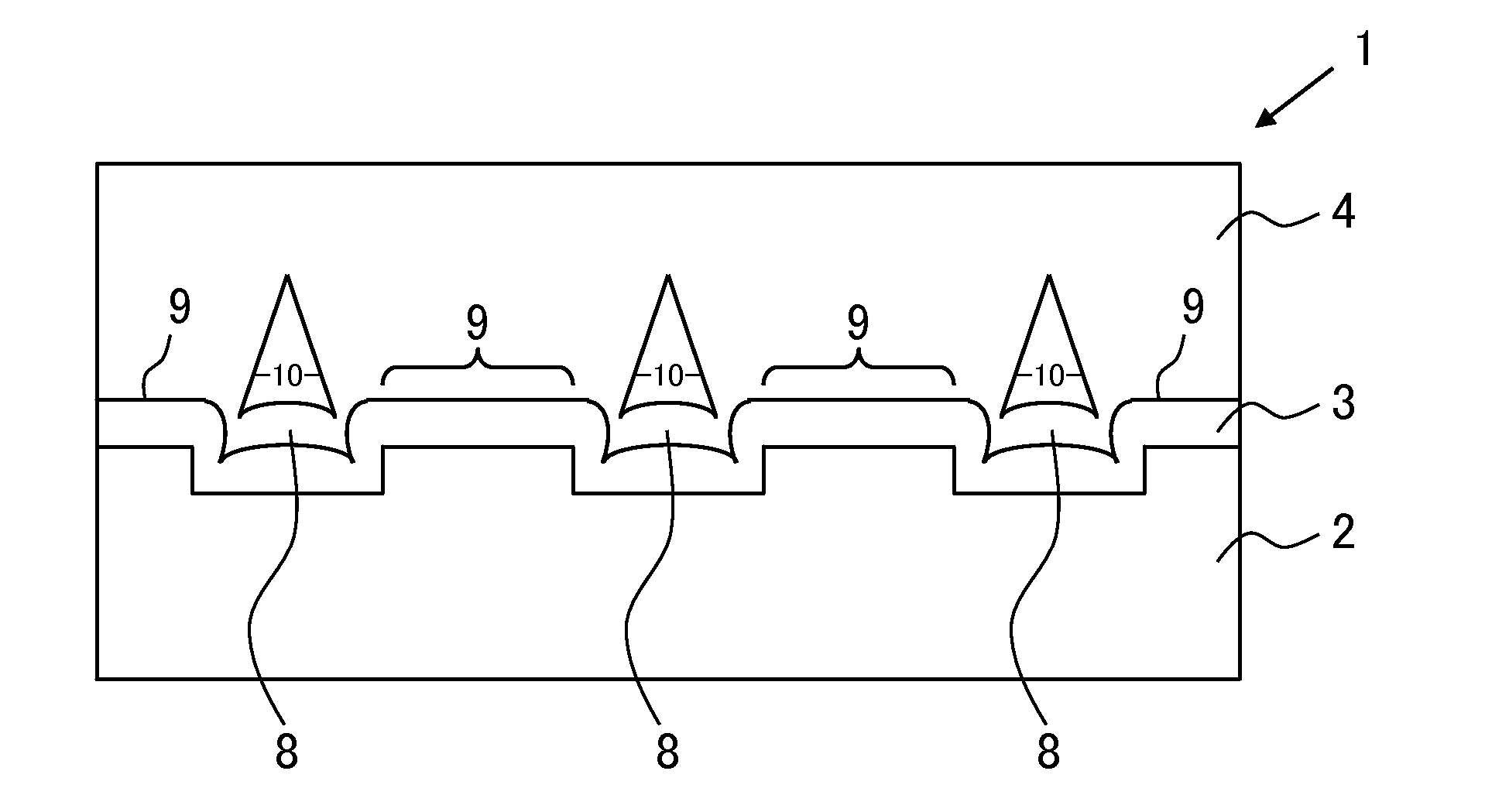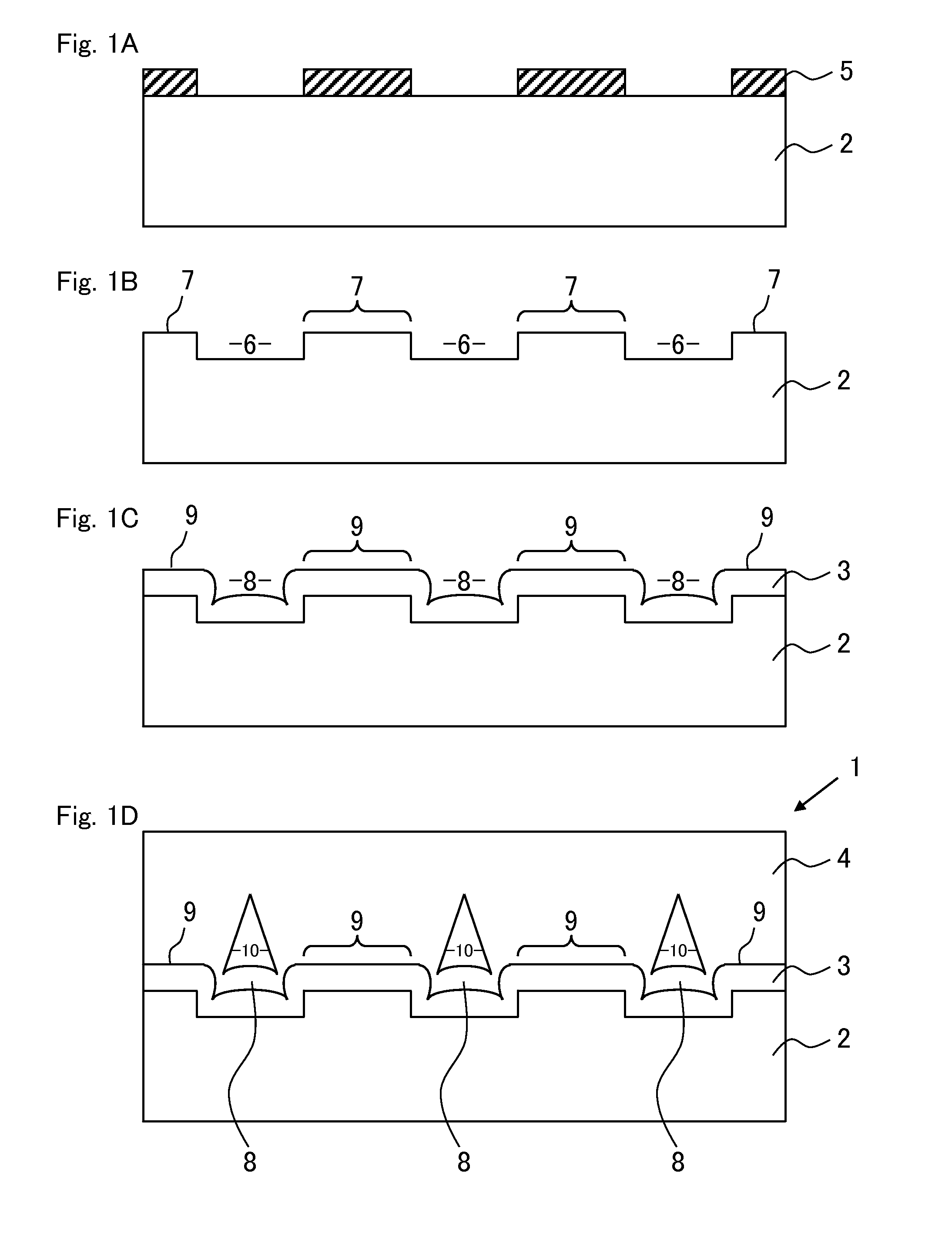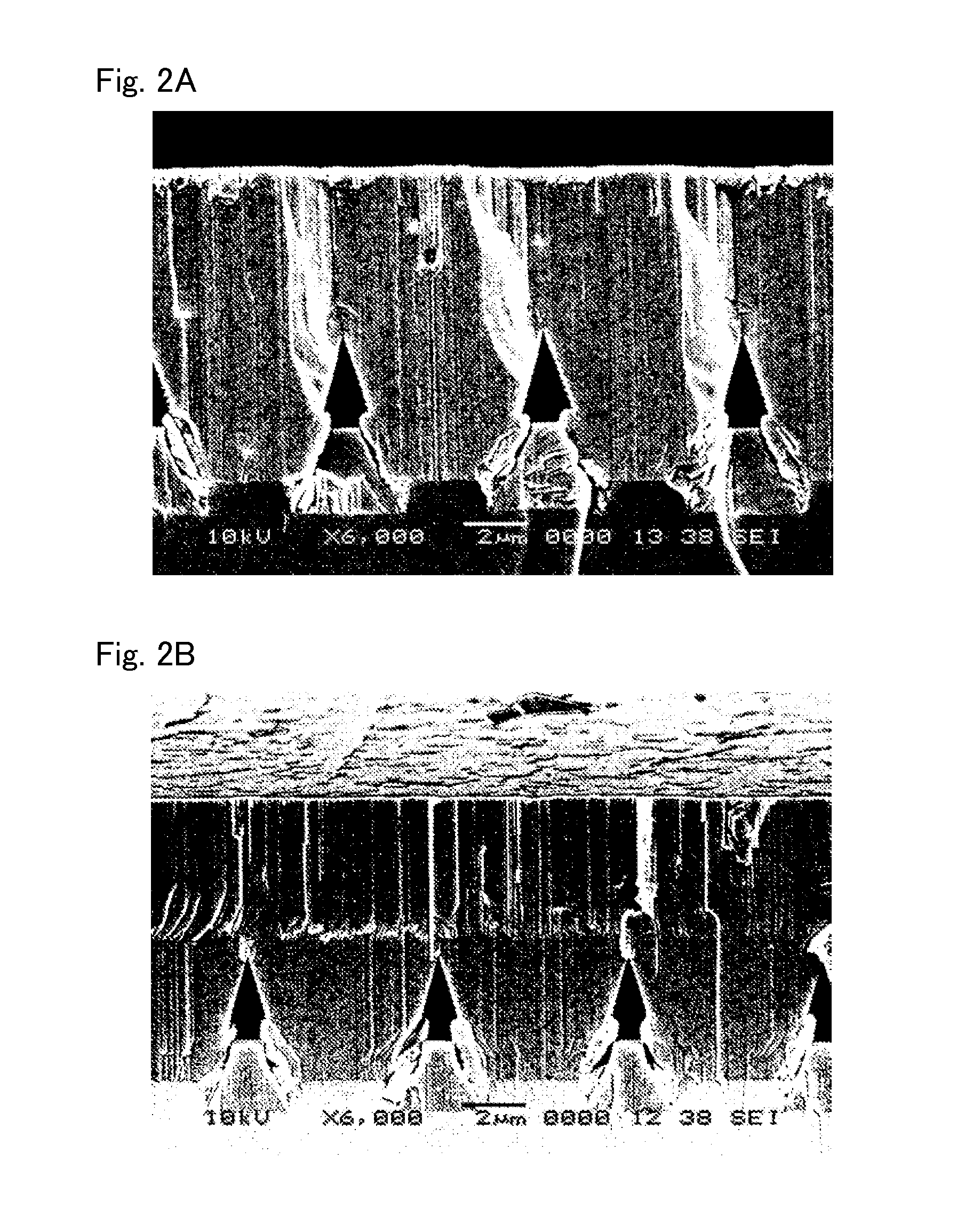Template for Epitaxial Growth and Process for Producing Same
a technology of epitaxial growth and epitaxial growth, which is applied in the direction of crystal growth process, polycrystalline material growth, transportation and packaging, etc., can solve the problems of increasing manufacturing costs, increasing manufacturing costs, and reducing production efficiency, so as to reduce threading dislocation density and improve production efficiency , the effect of high crystal quality
- Summary
- Abstract
- Description
- Claims
- Application Information
AI Technical Summary
Benefits of technology
Problems solved by technology
Method used
Image
Examples
example 1 and example 2
[0048]FIGS. 2A and 2B and FIGS. 3A and 3B show the SEM images (cross-sectional views 2A and 3A and bird's-eye views 2B and 3B) of Examples 1 and 2. In Example 1, the width of the grooves 6 on the surface of the sapphire substrate 2 and the gaps between the grooves 6 are 3 μm respectively, and the depth thereof is 1 μm. The thicknesses of the initial-stage AlN layer 3 and the AlN layer 4 are 1.0 μm and 9.8 μm respectively. In Example 2, the width of the grooves 6 on the surface of the sapphire substrate 2 and the gaps between the grooves 6 are 2 μm respectively, and the depth thereof is 0.5 μm. The thicknesses of the initial-stage AlN layer 3 and the AlN layer 4 are 1.0 μm and 6.2 μm respectively.
[0049]FIGS. 2A and 2B and FIGS. 3A and 3B show that the AlN layers 4 have a fine and flat surface because the layers were formed on the C+ axis oriented ininitial-stage AlN layers 3, although there is a difference in size of recesses and protrusions on the surface of the sapphire substrate 2...
example 4
[0059]FIGS. 9A and 9B show the SEM images of Example 4. FIG. 9A is a cross-sectional view and FIG. 9B is a bird's-eye view after the AlN layer 4 of Example 4 was formed and then an Al0.8Ga0.2N layer was sequentially grown thereon by the MOVPE method. The growth temperature of the Al0.8Ga0.2N layer is 1,160° C., and the flow ratio (NH3 / MO) of TMA, TMG (trimethylgallium) and NH3 is 899. In Example 5, the width of the grooves 6 formed on the surface of the sapphire substrate 2 is 5 μm; the gaps between the grooves 6 are 5 μm; and the depth thereof is 0.3 μm. The thicknesses of the initial-stage AlN layer 3, the AlN layer 4, and the Al0.8Ga0.2N layer are 1.3 μm, 5.8 μm and 1.8 μm, respectively.
[0060]FIGS. 9A and 9B clearly show that the Al0.8Ga0.2N layer formed on the AlN layer 4 also has a fine and flat surface like the AlN layer 4 by orienting the initial-stage AlN layer 3 in the C+ axis, and that the AlGaN layer of high crystal quality is formed on the present template 1. The surface...
example 5
[0061]FIG. 10 shows a cross-sectional TEM image (bright field image) after the AlN layer 4 of Example 5 was formed. In Example 5, the width of the grooves 6 on the surface of the sapphire substrate 2 and the gaps between the grooves 6 are 2 μm respectively, and the depth thereof is 0.5 μm. The thicknesses of the initial-stage AlN layer 3 and the AlN layer 4 are 1.0 μm and 6.5 μm, respectively.
[0062]FIGS. 11A and 11B show the results in which the threading dislocation density of Example 5 was evaluated, by using the cross-sectional TEM image shown in FIG. 10. In FIG. 11A, open circles ◯ indicate edge dislocation densities at three regions A to C and filled circles indicate screw dislocation densities at three regions A to C. FIG. 11B shows average threading dislocation densities at three regions A to C. Regarding the three regions A to C, the region A indicates the region of the initial-stage AlN layer 3 above the protrusion surfaces 9 and the initial-stage growth layer of the AlN ...
PUM
| Property | Measurement | Unit |
|---|---|---|
| depth | aaaaa | aaaaa |
| thickness | aaaaa | aaaaa |
| thickness | aaaaa | aaaaa |
Abstract
Description
Claims
Application Information
 Login to View More
Login to View More - R&D
- Intellectual Property
- Life Sciences
- Materials
- Tech Scout
- Unparalleled Data Quality
- Higher Quality Content
- 60% Fewer Hallucinations
Browse by: Latest US Patents, China's latest patents, Technical Efficacy Thesaurus, Application Domain, Technology Topic, Popular Technical Reports.
© 2025 PatSnap. All rights reserved.Legal|Privacy policy|Modern Slavery Act Transparency Statement|Sitemap|About US| Contact US: help@patsnap.com



